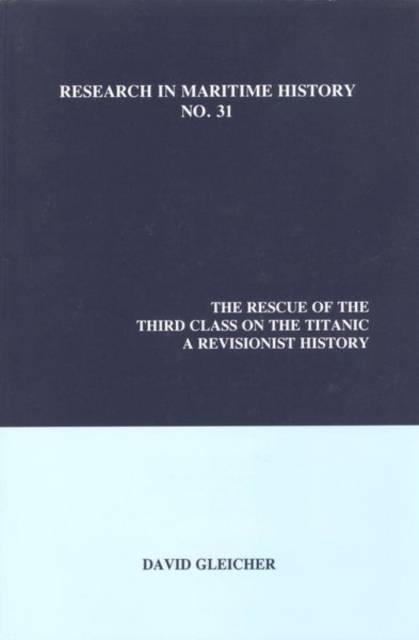
- Retrait gratuit dans votre magasin Club
- 7.000.000 titres dans notre catalogue
- Payer en toute sécurité
- Toujours un magasin près de chez vous
- Retrait gratuit dans votre magasin Club
- 7.000.0000 titres dans notre catalogue
- Payer en toute sécurité
- Toujours un magasin près de chez vous
36,95 €
+ 73 points
Description
This work seeks to understand why a disproportionately large number of third class passengers, particularly women and children, died during the sinking of the Titanic in relation to the first and second classes. It examines the gender, class, social, and cultural factors that influenced this disparity. It aims to uncover both why and how five hundred and thirty one third class passengers died on the night of April 14th 1912. A key area of focus is the difficult relationship between the ship's authorities and the men of the third class, and the extent to which this determined the fate of passengers during the rescue efforts. The introduction asks 'Who were the third class passengers?' and uses ethnic and economic backgrounds to suggest the third class belonged to the 'Old Immigration' wave of migrants, rather than the contemporary 'New Immigration' of the first and second. The first chapter concerns the exclusion of third class narratives in the 'popular story' of the Titanic. Chapters two through seven determine the whereabouts of the third class during every stage of evacuation, and flags the discrepancies in testimonies from both the British and American inquiries. Chapter eight provides a conclusion, which claims the 'popular story' includes a great many falsehoods with regard to the third class - including their treatment by crew, their behaviours, and their survival rates. The first appendix tables nationalities into regions; the second outlines the twenty routes to the lifeboats, as testified by one of the Titanic design architects; and the third provides deck plans for every level of the ship.
Spécifications
Parties prenantes
- Auteur(s) :
- Editeur:
Contenu
- Nombre de pages :
- 364
- Langue:
- Anglais
- Collection :
- Tome:
- n° 31
Caractéristiques
- EAN:
- 9780973893410
- Date de parution :
- 01-01-06
- Format:
- Livre broché
- Format numérique:
- Trade paperback (VS)
- Dimensions :
- 149 mm x 230 mm
- Poids :
- 526 g

Les avis
Nous publions uniquement les avis qui respectent les conditions requises. Consultez nos conditions pour les avis.






